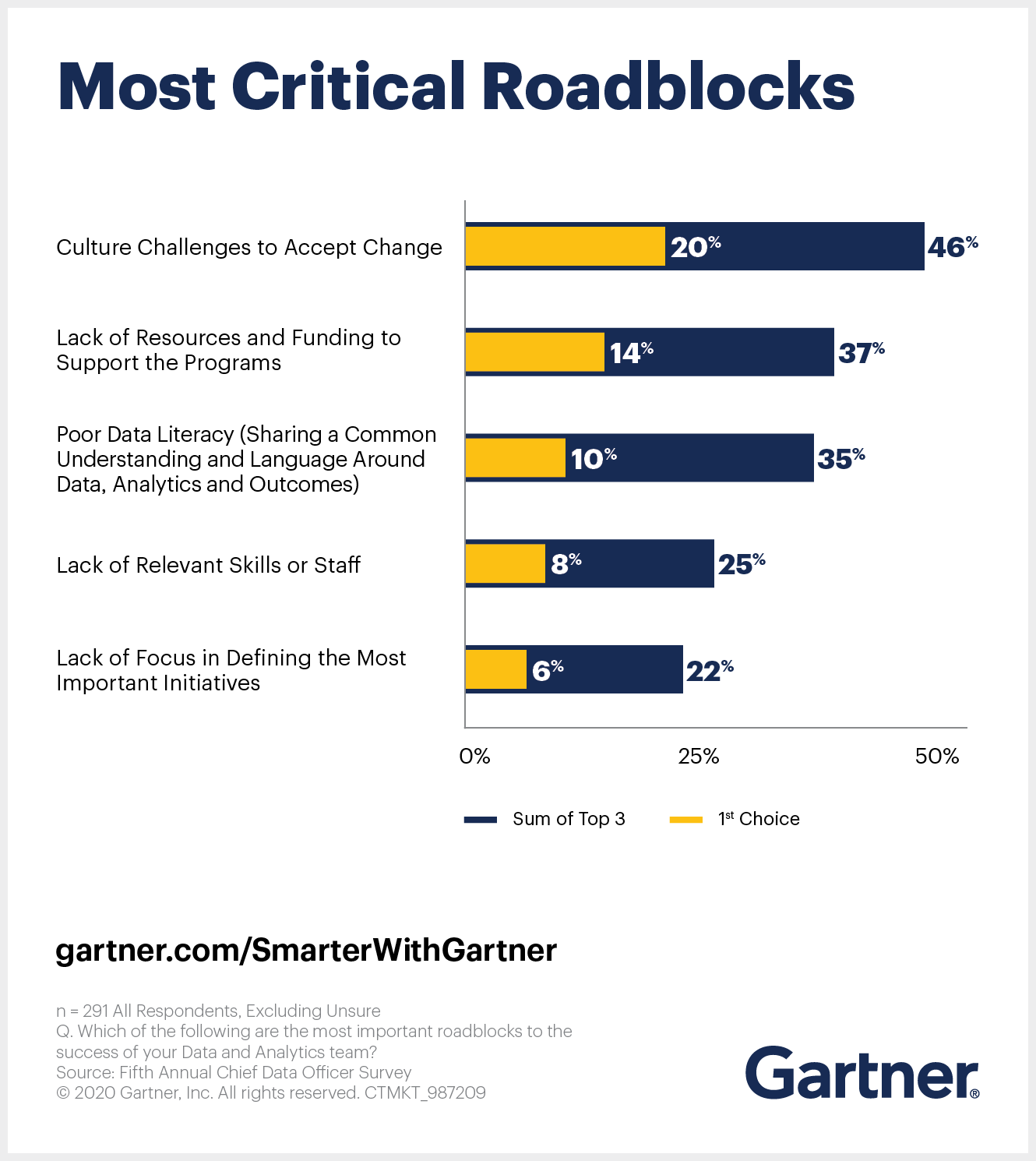Lead culture change, develop data literacy programs and upskill existing staff to build an effective data and analytics team.
The primary mission of many data and analytics leaders and chief data officers (CDOs) consists of building an effective data and analytics team to establish data and analytics as a strategic discipline within their organization. However, CDOs are likely to encounter five critical roadblocks in developing these teams, according to the Gartner Annual CDO Survey.
How to overcome difficulties influencing cultural change
“Changing the culture of the organization means changing the hearts and minds of individual employees,” says Jorgen Heizenberg, Senior Director Analyst, Gartner. “As a data-driven culture is more a factor of influence than of control, spread the word about how data and analytics can help drive business results across business units. Data and analytics is not a technology implementation — it is a change management initiative.”
Inform your employees about the data and analytics strategy and the objectives, and ask for their support. Don’t forget to demonstrate results so the business sees some real-life examples of how data and analytics has created value. For example, showcase the results of a successful experiment, collaboratively work on prototypes or organize a data hackathon.
How to overcome lack of funding and resources
When asked to show the business value of data and analytics to the organization, data and analytics leaders often fail to connect the proposed organizational model with the desired business outcomes. As a result, business leaders do not give them the desired funding and resources for their programs.
Create a data and analytics organization model that better responds to the dynamics of changing circumstances, such as a pandemic, and that better aligns with the overall business objectives as they shift to digital business. To do so, start by forming small, cross-functional teams. These teams can integrate different data sources, assess data quality and give insights into what data and analytics are needed by the business.
How to overcome a lack of data literacy
The CDO’s desire to establish a data-driven culture is often hindered by poor data literacy. Data literacy is the ability to read, write and communicate data in context.
Without data-literate employees across the business, business leaders will remain unclear about what data it has, what the data could be used for and the quality of the data. As a result, organizations will fail to identify potential business opportunities.
Begin by implementing a limited-scope and highly targeted pilot program for data literacy skills training. Work with a group of stakeholders who already have enthusiasm and appetite for data and analytics and who recognize that improving data literacy is a vital factor for success.
Identify or survey the current available skills, roles and competencies within your organization. Match those against the business demand that comes from the various business units. In this way, the deficit in data and analytics skills becomes clear. Upskill or reskill talent, using external support where needed.
In addition, establish teams of various specialists such as data integrators, data scientists, data modelers, subject matter experts and business analysts. Through 2023, data scientists and analysts will lose 60% to 70% of their productive time to activities like finding, preparing, integrating and sharing datasets, making data engineers a must-have persona on their teams.
How to overcome lack of focus on most important data and analytics initiatives
Lacking focus on the most important data and analytics initiatives is preventing organizations from improving data and analytics maturity. This often creates complications when using data and analytics capabilities across the business. For example, where to invest first? Create a governed data lake or support self-service data exploration?
Use a maturity assessment that clarifies the data and analytics capabilities and deficits within the organization. Looking at the current state of data, people, process and technology across your organization can provide guidance to move toward the next level of maturity.
























